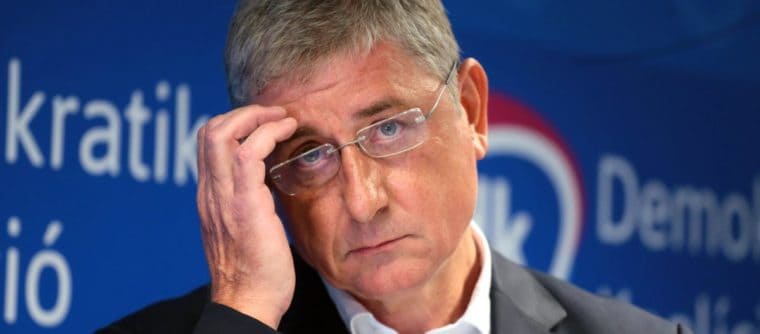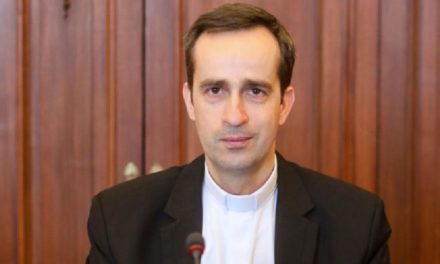Since the election failure, the left-wing parties, with the exception of the Democratic Coalition, have been in a spiritual-ideological, organizational and leadership crisis, so their voters have turned away from them en masse. This is also supported by the series of failed interim municipal elections and the failure of the series of demonstrations against the KATA amendment, for which they could not successfully mobilize, in fact: some of the organizers openly distanced themselves from the parties.
The fact that Péter Márki-Zay Ferenc Gyurcsány and the DK still Moreover, the opposition voting base cannot support so many parties , so the next period - in the absence of renewal - will be about survival and competition with each other.
The XXI. The latest analysis of Szazad Intézet examines the decline in the popularity of left-wing parties and presents the background of the Kurd faces of the past months.
The left is in a structural crisis
To date, the opposition parties have not been able to recover from the political crisis caused by the election failure, they still have nothing clear to say, they lack a long-term strategy and the struggle between them has intensified again. Left-wing politicians are busy resolving internal conflicts and ensuring their own survival, while there is a debate about whether to prepare jointly or separately for the next contest, the simultaneous 2024 European Parliament and local elections.
The left-wing parties - with the exception of the Democratic Coalition - have been in a spiritual-ideological, organizational and leadership crisis since the lost elections, they still have no political vision, which is why voters turned away from them en masse. Only DK remained organizationally stable, and during the previous reforms, only Ferenc Gyurcsány could remain at the head of his party and his representative group, while the other party and faction leaders either resigned or were dismissed from their positions. The leading role of the Democratic Coalition is also supported by public opinion polls published in June. The rejection of the opposition is well understood by the fact that, while the ruling parties are above fifty percent according to all measurements, the "most popular" DK only ranges between 6-7 percent.
There are a record number of seven opposition groups in the Parliament, six of which are from the left, so the former rainbow coalition has become more fragmented than ever before. Overall, it can be said that the role of the system opposition has entered a structural crisis, because the opposition voting base cannot support so many and so many different parties.
Mid-term elections: the left is in ruins
From the fragmentation, the political confusion and the permanent crisis, it necessarily follows that the social support of the parties is constantly decreasing. This is supported by the results of the by-elections, which were postponed due to the epidemic situation and have been made up until now, which are characterized by the high number (160 settlements), the wide coverage (small and large settlements, county seats, capital districts) and the existence of all types of voting (small list, individual electoral district , mayoral mandates), it can be stated that we can draw authoritative conclusions. The results of the interim municipal elections held so far clearly prove that the opinion of the left-wing parties has further deteriorated compared to the April 3 elections.
In the first interim contest, the local authority elections held on June 26 in more than fifty municipalities for a total of 74 directly obtainable mandates, the candidates of the Fidesz-KDNP party alliance in three districts out of four in Budapest (V., VII., VIII. districts) and six small towns (Békés, Keszthely, Kőszeg, Nagykőrös, Sárvár, Szigetszentmiklós) and three county seats (Eger, two districts of Nyíregyházán, Szeged). The left, on the other hand, suffered a huge failure: it was only able to obtain two individual mandates (Budapest 4th district, Gyöngyös). While the governing parties won six mayoral positions (Balatonalmádi, Cún, Gyúró, Izsák, Keszthely, Nyírkércs) and nine seats on the short list, the left won none.
On June 26, the Fidesz-KDNP party alliance was also able to win in municipalities that were still left-wing strongholds in the April 3 elections, including Budapest and Szeged.
On July 3 and 10, 2022, similar, devastating results for the left were achieved. In more than twenty localities, the missed by-elections were then made up, of which the opposition parties did not win a single mandate. On the other hand, the governing parties also managed to win in municipalities that have been under left-wing leadership since 2019, such as in Dunaújváros, where the right won in individual electoral district number 2. The Fidesz-KDNP party alliance won four more mayoral seats (Alsónána, Őrtilos, Szamostatárfalva, Szamosújlak), while the left could not win in any municipality. It is also important to point out that on July 10, Budapest XVI. Fidesz's candidates won with a majority of more than two-thirds in the district and in Kecskemét, electoral district No. 9.
Most recently, on July 17, interim local authority elections were held in eleven municipalities, of which independent candidates ran in seven smaller municipalities and entered the local government bodies or won the mayor's seat. The parties nominated candidates in a total of four seats, of which the Fidesz-KDNP party alliance won in three, which indicates that the right wing remained strong after the elections, while the left wing lost more voters.
In addition, he won an individual mandate in Esztergom's electoral district No. 1 with more than 85 percent, and in Szentendre's electoral district No. 10 with two-thirds, as well as the right-wing candidate for the mayor's position in Mezőtúr. The governing parties could not win in Salgótarján's electoral district number seven, where the independent candidate supported by the left won by barely eight votes.
Failed demonstrations, discredited politics
Last week, the opposition parties tried to capitalize on the movements that arose in connection with the KATA amendment, thus making political profit from the dissatisfaction. However, with the appearance of the left-wing politicians who failed on April 3, the series of demonstrations in the capital, which mobilized only a few thousand people, became more and more discredited day by day. The lack of organization, the nocturnal movements drowned in partying and the fact that a significant part of the protesters distanced themselves from the opposition parties discredited the originally formulated goals and further worsened the perception of left-wing politicians, especially those of the moment who openly joined the organization.
In retrospect, it can be stated that, in a political sense, it did more harm than good to the left-wing parties that they tried to make political profit from the events , since it turned out that they were not able to mobilize a large crowd either together or separately.
The lack of renewal is shown by the fact that Péter Márki-Zay once again appeared in a "leading role" during the series of demonstrations, calling people to the streets in the aggressive style he regularly used during the election campaign on his social media page, and then started insulting Fidesz at the event - in front of barely two thousand people -voters. It is clear from all this that there is no renewal on the left: the same actors are trying to bully people with the same methods as before the April 3 elections.
It should also be seen that the supposed opposition criticism raises the question of credibility, because when the KATA tax was introduced, the left-wing parties voted against the measure in the parliament. So now they want to represent the apparent defense of the government decision that they never supported, so it is understandable that they cannot get the masses on their side.
Will the left continue together or separately?
Ferenc Gyurcsány has indicated several times in recent days that he is ready to take over the management of the country after a possible fall of the government. The president of the DK has not hidden it until now, but now he openly accepts his intentions for the future leadership of the left. Ferenc Gyurcsány also made it clear that he would like the opposition to unite again, while Jobbik, Momentum and MSZP want to build alone for the time being, so it is expected that the struggle between the parties will continue.
The political lesson of the failed series of demonstrations is that, although the left is able to divert attention from the political crisis for a short time, it is still unable to present a credible alternative that would have serious social support. It also turned out that part of the opposition still trusts the failed Prime Minister candidate, because they gave Péter Márki-Zay a chance, which again means a lack of renewal.
The left will face a big challenge in the next, two years from now, to be held at the same time, the European Parliament and local government elections. It is not yet clear whether they intend to run together or separately. Their situation is made worse by the fact that they are decades behind the governing parties in terms of construction, their party elite is fragmented, there is no ideological innovation, and their support will continue to decrease due to a lack of political voice. Moreover, the crisis of the opposition is also a structural crisis, since there is no need for so many parties on the left.
The question of the future is, therefore, which opposition party will remain, which will strive for independence and which will lean towards cooperation, so the next period will be about the competition between each other to regain the trust of the voters.
Source and title image: XXI. Century Institute/Nagy Ervin












